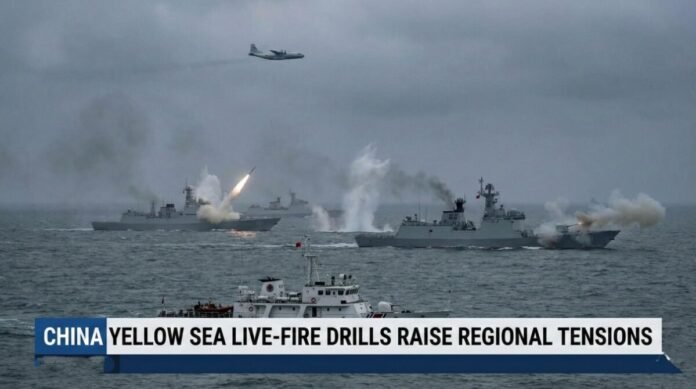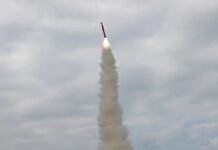
Key Points:
- China announced live-fire drills in northern Yellow Sea from November 26, 8 AM to November 29, 12 PM
- Dalian Maritime Authority issued navigation warning, prohibiting all vessel movement in designated area
- Exercises follow Japanese PM Sanae Takaichi’s Taiwan contingency comments and missile deployment on Yonaguni Island
- South Korea fears being dragged into unwanted conflict as US pressures Seoul on Taiwan support
- Multiple overlapping exercises in central, southern, and northern Yellow Sea throughout November
- China calls Japan’s missile deployment “extremely dangerous,” stoking military confrontation
China’s Maritime Safety Administration announced significant military activity on Monday, stating that live-fire drills will be held in the northern part of the Yellow Sea from Tuesday to Friday. The exercise will begin at 8 a.m. on November 26 and continue until 12 p.m. on November 29. The Dalian Maritime Authority of Liaoning Province issued a notice clarifying that the movement of any type of vessel in the designated maritime area will be strictly prohibited during the exercise. This restriction is imposed for safety reasons to prevent any accidents, collisions, or damage during the military activity.
Expanding Military Activities Across the Yellow Sea
The northern Yellow Sea exercise is part of a series of overlapping military drills throughout November. Earlier this month, China conducted live-fire exercises in the central Yellow Sea from November 17-19, and in the southern Yellow Sea from November 18-25. The Dalian Maritime Authority also announced military missions in the Bohai Strait and northern Yellow Sea from November 23 to December 7. These expanding exercises demonstrate China’s strategy of strengthening control over maritime areas and enhancing naval surveillance capabilities.
Regional Concerns for South Korea and Japan
The exercises in the Yellow Sea are particularly concerning for South Korea and Japan. This maritime area is located very close to South Korea’s border, which South Korea considers part of a Chinese pressure strategy. Japan considers it a threat to its maritime routes and regional security. China’s relations with both countries are already strained, and these exercises could further intensify regional diplomatic tensions. South Korea is watching with mounting alarm as tensions escalate, fearing being dragged into an unwanted flare-up over the Taiwan Strait.
US Pressure on South Korea Complicates Situation
The situation is further complicated by US pressure on Seoul to play a greater supporting role in any Taiwan-related contingency. The United States is pressing South Korea to project the power of its 28,500 troops stationed in the country beyond the Korean peninsula. This pressure could complicate Seoul’s long-standing strategy of avoiding overt alignment with Taiwan while maintaining cooperation with both Beijing and Washington. Analysts say the flare-up is particularly troubling because it comes at a moment when regional stability is already fragile.
Japan’s Missile Deployment Sparks Chinese Outrage
The exercises follow remarks by Japanese Prime Minister Sanae Takaichi concerning a hypothetical Chinese attack on Taiwan, which have heightened tensions between China and Japan. In response, Japan is deploying offensive weapons on Yonaguni Island, close to the Taiwan region. Chinese Foreign Ministry spokesperson Mao Ning called the move “extremely dangerous,” stating it stokes military confrontation. Japan’s Defence Minister Shinjiro Koizumi visited the Yonaguni military base, claiming the deployment can help lower the chance of an armed attack. China views these actions as a deliberate move to create regional tensions.
Potential for Regional Escalation
Although China describes these exercises as part of routine training and preparation, security analysts believe such live-fire drills are often a display of power. This new activity by China could increase instability and unease in these sensitive areas, especially when disputes and military tensions already exist in areas like the South China Sea and the East China Sea. Regional experts believe the political message of these drills is clear: China wants to signal to its neighbors that it is unwilling to compromise on its maritime interests and claims. Strong reactions may be seen from Korea and Japan in the coming days as the situation continues to develop.





















































